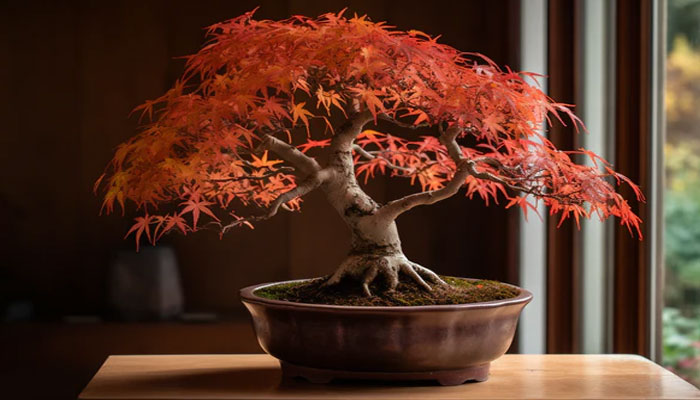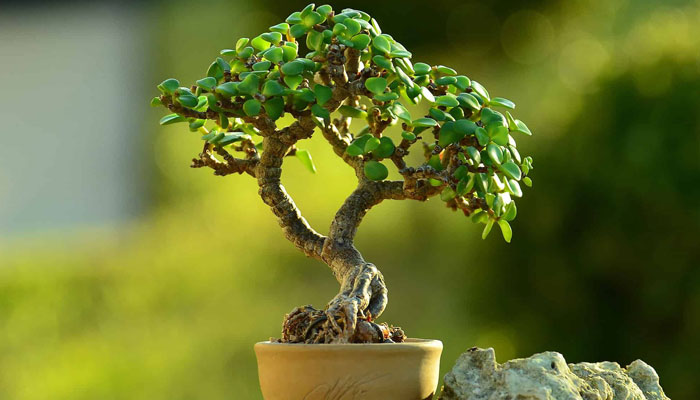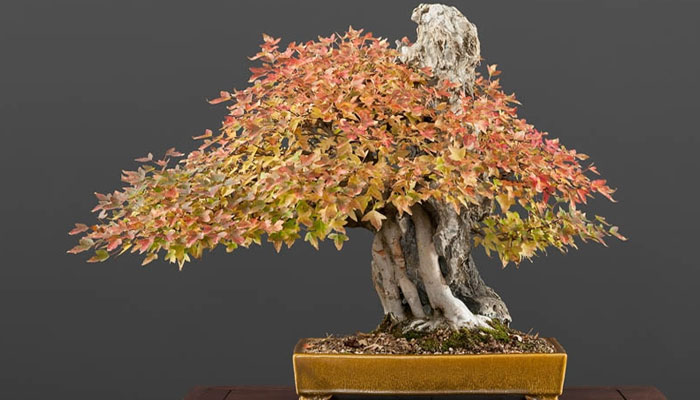
Bonsai is the ancient art of growing miniature trees in pots, using various techniques to shape and train them into beautiful and realistic forms. Bonsai trees are not only aesthetically pleasing but also have many benefits for your home and health. They can purify the air, reduce stress, improve concentration, and create a sense of harmony and tranquility.
However, not all trees are suitable for bonsai. Some species are more adaptable, resilient, and easy to care for than others. Some species have small foliage, attractive bark, or colorful flowers that fit well with the miniature aesthetic of bonsai. Some species are more responsive to pruning, wiring, and shaping, and can be trained into various styles.
If you are looking for the best bonsai tree species for your home, here are some of the most popular ones that you can choose from, along with their characteristics, care requirements, and tips.
Juniper Bonsai

Juniper bonsai trees are one of the most common and widely available bonsai species. They are evergreen conifers that have scaly foliage and attractive bark. Junipers are hardy and tolerant of various conditions, making them ideal for beginners. They can withstand heavy pruning and wiring and can be shaped into almost any style, such as formal upright, informal upright, slanting, cascade, semi-cascade, literati, forest, raft, and root-over-rock.
Junipers prefer full sun and dry soil and need to be protected from frost. Depending on the climate, they can be grown either indoors or outdoors. They should be watered when the soil feels slightly dry, and fertilized once a month during the growing season. They should be repotted every two to three years in spring, and pruned and wired as needed to maintain the desired shape.
Ficus Bonsai

Ficus bonsai trees are another popular choice for indoor bonsai. They are tropical plants that have glossy leaves and smooth bark. Ficus are easy to grow and maintain, as they can adapt to different environments and lighting conditions. They are also resistant to pests and diseases and can recover from pruning mistakes. Ficus can produce aerial roots, which add to their appeal and character. Ficus can be trained into various styles, such as informal upright, slanting, cascade, semi-cascade, broom, forest, and banyan.
Ficus need plenty of sunlight and humidity and should be watered regularly. They should be fertilized every two weeks during the growing season, and every four weeks during the dormant season. They should be repotted every one to two years in spring, and pruned and wired as needed to maintain the desired shape.
Chinese Elm Bonsai

Chinese elm bonsai trees are one of the most versatile and elegant bonsai species. They are deciduous trees that have small, serrated leaves and dark, fissured bark. Chinese elms are suitable for both indoor and outdoor bonsai, as they can tolerate a range of temperatures and climates. They are also easy to prune and shape and can be trained into various styles, such as formal upright, informal upright, slanting, cascade, semi-cascade, broom, forest, raft, and root-over-rock.
Chinese elms thrive in bright, indirect light with consistently moist soil. Watering is recommended when the soil feels slightly dry to the touch. Fertilize them once a month during the growing season and adjust the frequency to once every two months during dormancy for optimal results. Repotting should be done every two to three years in spring to promote healthy growth. Additionally, prune and wire the Chinese elms as needed to maintain the desired shape. Elevate your gardening experience with exclusive savings using the Bloombox Club Voucher Code.
Japanese Maple Bonsai

Japanese maple bonsai trees are one of the most beautiful and colorful bonsai species. They are deciduous trees that have palmate leaves that change color with the seasons, from green to red, orange, yellow, or purple. Japanese maples are ideal for outdoor bonsai, as they need a cold winter dormancy period to thrive. They are also relatively easy to care for, as they only need moderate pruning and wiring. Japanese maples can be trained into various styles, such as formal upright, informal upright, slanting, cascade, semi-cascade, broom, forest, and clump.
Japanese maples need partial shade and well-drained soil and should be watered when the soil feels slightly dry. They should be fertilized once a month during the growing season, and once every two months during the dormant season. They should be repotted every two to four years in spring, and pruned and wired as needed to maintain the desired shape.
Jade Bonsai

Jade bonsai trees are one of the most unique and succulent bonsai species. They are evergreen plants that have thick, fleshy leaves and stems that store water. Jade are very easy to grow and maintain, as they can survive in low light and dry conditions. They are also very forgiving and resilient and can regrow from cuttings and fallen leaves. Jade can be shaped into various styles, such as informal upright, slanting, cascade, semi-cascade, literati, and clump. Jade can also produce small, star-shaped flowers in winter.
Jade needs bright light and occasional watering and should be watered when the soil feels dry. They should be fertilized once every three months during the growing season, and once every six months during the dormant season. They should be repotted every two to three years in spring, and pruned and wired as needed to maintain the desired shape.
Trident Maple Bonsai

Trident maple bonsai trees are one of the most popular and impressive bonsai species. They are deciduous trees that have three-lobed leaves and smooth, gray bark. Trident maples are suitable for outdoor bonsai, as they need a cold winter dormancy period to flourish. They are also easy to work with, as they have fast growth and strong branches. Trident maples can be trained into various styles, such as formal upright, informal upright, slanting, cascade, semi-cascade, broom, forest, raft, and root-over-rock. Trident maples can also produce stunning autumn colors, from yellow to orange to red.
Trident maples need full sun and moist soil and should be watered when the soil feels slightly dry. They should be fertilized once a month during the growing season, and once every two months during the dormant season. They should be repotted every one to two years in spring, and pruned and wired regularly to maintain the desired shape.
Pine Bonsai

Pine bonsai trees are one of the most classic and majestic bonsai species. They are evergreen conifers that have needle-like foliage and woody cones. Pines are hardy and durable and can withstand harsh conditions and neglect. They can also be shaped into various styles, such as formal upright, informal upright, slanting, cascade, semi-cascade, literati, forest, and windswept. Pines can create a sense of age and dignity, as they can live for hundreds of years.
Pines thrive in full sun and well-drained soil, requiring sparing watering. For optimal growth, fertilize them monthly during the growing season and adjust to once every two months during dormancy. They should be repotted every three to five years in spring, and pruning and wiring should be performed as needed to maintain the desired shape. Whether grown indoors or outdoors, enhance your gardening experience with exclusive savings using the Home and Garden Voucher Code.
Serissa Bonsai

Serissa bonsai trees are one of the most delicate and charming bonsai species. They are evergreen shrubs that have small, oval leaves and fragrant, white flowers. Serissa are ideal for indoor bonsai, as they need a warm and humid environment to thrive. They are also easy to prune and shape and can be trained into various styles, such as informal upright, slanting, cascade, semi-cascade, broom, forest, and raft.
Serissa needs bright, indirect light and moist soil, and should be watered frequently. They should be fertilized once a month during the growing season, and once every two months during the dormant season. They should be repotted every one to two years in spring, and pruned and wired as needed to maintain the desired shape.
These are some of the most popular bonsai tree species for your home. However, there are many more species that you can explore and experiment with. The best bonsai tree for you depends on your personal preference, skill level, and environment. Whatever species you choose, bonsai is a rewarding and enjoyable hobby that can bring you joy and satisfaction for years to come.
Conclusion
When choosing a bonsai tree for your home, consider popular species like the Ficus, Juniper, and Chinese Elm. These trees offer beauty, symbolism, and ease of care, making them ideal choices for both beginners and experienced enthusiasts alike. With the right care and attention, your bonsai tree can bring a touch of nature and tranquility into your living space.








